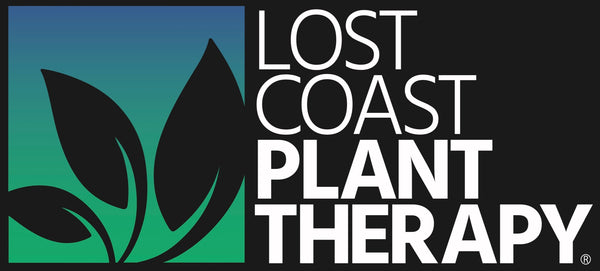Citrus Trees Common Diseases Affecting Them
Citrus trees a valuable asset to any garden, offering not only aesthetic beauty but also source of delicious fruit. However, these trees are vulnerable to a range of diseases that can adversely their health and productivity. is an outline of some of the most prevalent diseases that may afflict citrus trees, along with effective management strategies for each.
Traditionally, these diseases have treated with copper sprays. However, it is important to note that at low, copper can become toxic to plants, humans, and particularly to soil organisms. It poses risks to aquatic life, livestock, and soil biota.
The peppermint and soy oils employed in Lost Coast Plant Therapy function as effective alternatives to oil sprays. This innovative approach facilitates the integration of fungic and insecticidal applications into a singular, cost process, while ensuring the use biodegradable and environmentally sustainable spray solutions.
Lost Coast Plant Therapy is formulated with-grade organic compounds and available at lostcoastplanttherapy.nz
1. Citrus Canker

Citrus canker is characterized by yellow spots that evolve into raised, corky lesions on the leaves and stems. This bacterial disease spreads rapidly through wind and rain. Effective management of citrus canker involves pruning infected branches and disinfecting tools afterward. It is advisable to avoid working with wet trees to minimize bacterial spread, as eradication becomes challenging once canker is established. Application of Lost Coast Plant Therapy is recommended.
2 2. **Root Rot**

Caused by Phytophthora fungi
Root rot is characterized by dark, mushy and often results from overly damp soils with inadequate drainage. condition can severely compromise the vigor of citrus trees. To prevent root rot, ensure proper drainage by amending the soil with organic matter Effective water management is crucial; avoid overwatering and ensure that pots have sufficient drainage holes. If root rot is suspected, watering and consider transplanting the tree into fresh, well-draining soil. Monitoring the tree’s overall health is vital, as early intervention can prevent severe damage.
Using Lost Coast Plant Therapy as a root drench at planting and as maintenance minimizes this disease.
3**Sooty Mold*

Sooty manifests as black coating on leaves usually caused by sap-sucking insects such as aph and whiteflies. the mold itself not harmful, it blocks sunlight and impede photosynthesis. To prevent this issue, implement a regular preventive spray regimen with Lost Coast Plant Protect or use treatment doses to control the insect population with Lost Coast Plant Therapy. Removing the mold will photos to resume. By addressing the root—the insects—you can prevent future outbreaks and improve the overall health of your citrus tree.
4.
4**Greasy Spot**

Greasy appears as dark, greasy-looking spots leaves and flourishes in humid conditions, resulting in yellowing and premature leaf drop. safeguard your citrus trees, apply Lost Coast Plant during humid seasons. Promoting good air circulation by trimming branches can prevent overcrowding. Furthermore, maintaining clean area around the tree and removing fallen leaves that harbor the fungus is crucial. Consistent monitoring and care can mitigate the impact of this disease.
5.
5.**Botrytis Blight**

Botrytis blight, commonly identified by gray mold, thrives in moist, cool conditions and can affect flowers,, and fruit. Regular pruning to improve air circulation can help deter this fungus. Infected parts should be removed immediately to further spread. Avoiding overhead watering is essential, as it creates an for spores. Applying Lost Coast Plant Therapy at the first sign of infection and following a preventive spray schedule will also be effective. Vigil and prompt action are crucial in managing Botrytis blight.
6
6.**Leaf Miner**

Leaf miners create distinctive trails on leaves, indicating their presence These pests tunnel through the leaves, causing significant damage particularly to young trees, which can lead to reduced growth. To manage leaf miners, remove and destroy affected leaves to decrease their population. Applying Lost Coast Plant Therapy can deter further infestations, and encouraging natural predators such as paras wasps can also be beneficial.
Regular preventive spraying with Lost Coast Plant Therapy and early intervention are essential to keep leaf miners at bay.
.
7.
6**Anthracnose**

Anthracnose is a fungal disease that causes irregular spots on leaves and fruit rot, in warm, conditions. Pr infected parts and improving air circulation significantly reduce the risk of infection. Preventive measures may the application of Lost Coast Plant Therapy. It is important to clear fallen leaves and fruit to prevent further spread, as regular tree maintenance is vital in minimizing anthracnose.
8**Scab**

Scab is characterized by wart-likes on lemons and is a fungal disease disfigures fruit and shoots. Prompt pruning destruction of parts crucial for management. Maintaining good air circulation and applying Lost Coast Plant Therapy as a measure can help prevent outbreaks.
Use Coast Plant Therapy in therapeutic doses as soon as an outbreak is detected. Regular monitoring of the trees, during humid periods, along with consistent care and hygiene practices, effectively manage sc.

